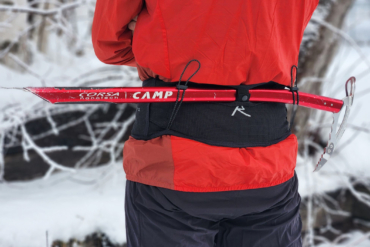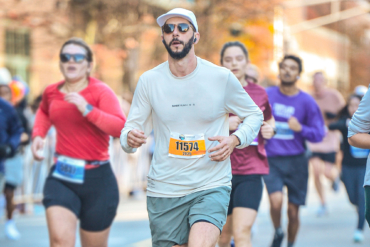These aren’t trail runners. They aren’t shoes you’d wear for a jog on the street, either. U.K.-based Inoveight Ltd. makes shoes for the oddball sport of mountain running.
Indeed, the company’s promotional literature says the shoes are designed for the complex, undulating terrain found in the mountains. Rocks, scree, talus, streambeds, icy goats trails, slabs and mountain meadows are all fair game.

The design of the Flyroc 310 and Terroc 330, two Inoveight shoes (www.inov-8.com) I recently put to the test, is a unique hybrid that melds the stability of a hiking boot with the speed of a trail-runner. Both feature aggressive treads, relatively stiff soles with embedded shanks, toe bumpers, low-profile mesh tongues, and extra thick, protective heals.
The company — which goes by Inoveight or, when feeling more catchy, Inov-8 — strives to make shoes that “feel like an extension of your foot.” The goal is to design a supportive, protective shoe that is essentially invisible. Inoveight wants people to feel as though they are running barefoot.
At first, the barefoot design might seem weird and flat-footed. It did for me. Running on the road, the shoes initially will feel strange and clunky, especially if you’re used to cushy, roll-to-toe-off running shoes. But the company believes the special design will make you a stronger runner after some initiation to the concept.

In my tests, I never got over the strange feel of these shoes running on hard surfaces. They slap the ground on each stride with my running style, and I felt like I was training in stiff hiking boots when I took a jog through the neighborhood.
But Inoveight shoes are not designed for pavement. And when I got off the cement, I immediately began to appreciate the design. They feel stable on steep, muddy slopes. They run well in snow. They tromp and stomp with force off the trail, letting you crash through bushes and jump over logs without hesitation.
Another nice feature, especially if you’re a backwoods explorer, orienteer or adventure racer that often gets wet feet in the woods, is the shoes’ quick-drying design. Mesh uppers on the Flyroc 310 and Terroc 330 allow water to escape the shoe after a stomp through a stream.
A downside to this moisture-wicking ability is that the shoes are not very water resistant. Even splashing through small puddles may be enough to get your feet wet, with drips coming through the mesh uppers. For most conditions, however, I personally favor this semi-permeable design, as waterproof shoes tend to not breathe as well or drain water that makes it in over the top of the shoe.
While they are similar shoes, I preferred the Terroc 330 ($90) model over the Flyroc 310 ($90). The Terroc 330 fit my foot much better and felt more stable. The Flyroc 310, which is a slightly lighter-weight shoe, felt too wide for my feet, so be sure to try these shoes for fit if you can before a purchase.
I put the Terroc 330 shoes to the test on several recent trail runs and bush-crashing orienteering races. In my quest to find the perfect off-trail shoe, these are my new favorites.






